Link-building has always been one of the most significant SEO strategies. What’s more important, this strategy is focused on increasing the amount of traffic your site gets. It is widely used by SEO experts. It attracts the attention of newbies who want to get familiar with this powerful strategy.
However, link-building is not a simple way to generate traffic. It has lots of aspects to take into account.
If you ask Google about link-building strategies and techniques, it will provide you with different results. You might be confused because there are lots of strategies and each of them tends to be the most actionable. Which one to choose?
It goes without saying that you shouldn’t stick to one strategy because link-building is a complicated process. Thus, you should be armed with the ones that make sense.
link-building strategies in 2025
So, I would like to share 19 cool link-building strategies you can’t miss in 2018.
Let’s start.
- Try to Get Links That Bring More Traffic
Who cares about links that bring no traffic? Nobody does. That’s why it is utterly important to “hunt” for valuable links only. But how can you know what amount of traffic a potential link brings?
Use Ahrefs Content Explorer tool and pay attention to “organic traffic” metric.

This particular link brings 4.3K traffic, so it is your target.
2. Create Link Bait Content
We create content to share some useful information with people first of all. But if we talk about getting traffic, we tend to attract links with the help of content. And here is the question “what content does work as bait for links?”
Obviously, that content must be engageable, high-quality, readable, and valuable. Let me give you a few hints concerning content you may create:
- Industry-specific curated sources compilations
- Interactive tools showcases
- Visual content
- Data-driven maps
By the way, it is not a secret that “evergreen” content works great for attracting links. Nevertheless, you need to add something new all the time when you cover another one “evergreen” topic. Otherwise, nobody will reread the same material.
3. Spend Your Time on Forums and Build Links There
Any forum is a wonderful place to spend your time discussing SEO and marketing subjects. Lots of experts in these fields like to chat on forums as well.
One of the most popular forums is Quora. Quora is a place where people ask questions and get answers. Furthermore, it could be used as an excellent opportunity to put links in the comments.
Go ahead and get some traffic using this method.
4. Broken Backlinks – Fix Them
A broken link is a link that targets the page that is no longer available. This page doesn’t exist due to some reasons. As you already guessed, no page – no traffic. Thus, this link should be either fixed or removed.
There is a specific report called “best by links” with a “404 not found” filter that you can find using the Content Explorer tool.
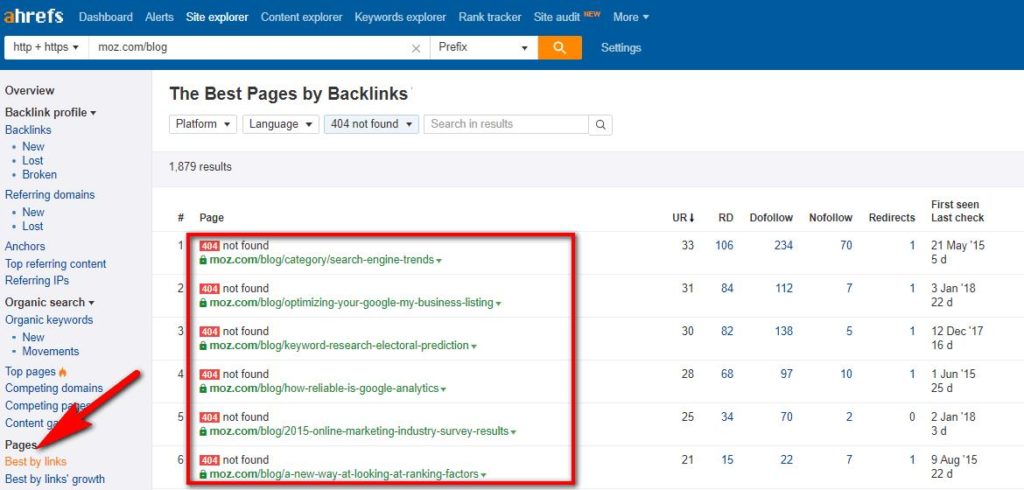
When you find these broken links, you should contact a blog editor and ask him or her to update the links. On the other hand, you can set up 301 redirects.
5. Do More Outreach
I believe outreach is one of the most efficient strategies to earn links. Yes, it takes your time, efforts but it works excellently . You should follow a few steps doing outreach:
- Search the opportunities
- Hunt Personal emails
- Craft personalized email templates
- Track the process
And here is a brief step-by-step guide.

I use two ways to find my potential candidates for outreach. The first one is to search on Google and then work with Site Explorer tool. But I do this manual research only when I have some time for this. Otherwise, I set up alerts for the keywords I want to get notifications about.
What’s the aim of the alerts? Alerts provide you with new links where a particular keyword has been mentioned. Each alert will be sent to your email address directly.
When you’ve chosen the links that would be a nice fit for outreach, it is time to find email addresses of your outreach targets. I highly recommend you use these three tools ContactOut, Findthat.email, and Voilanorbert. It saves time and effort.
If we talk about crafting personalized email templates, I advise you to work with Buzzstream. Furthermore, this service allows you to track a success rate for each template you use. Please view click, open, and reply rates metrics.
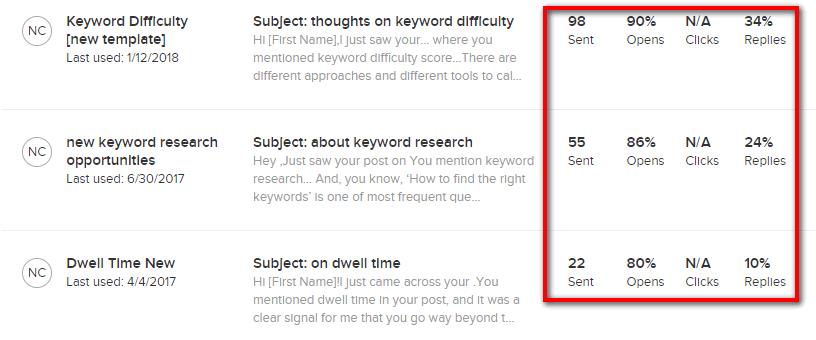
What’s more critical, Buzzstream shows you if the message you’ve sent was opened or not.

I hope I’ve convinced you that using this service is helpful.
6. Which Link to Chase “Dofollow” Or “Nofollow”? Hunt for Both Types
I bet your priority is building “dofollow” links. If we talk about rankings, these links have more weight in contrast to “nofollow” ones. Hence, “nofollow” links have some impact on SEO too.
When you try to get “dofollow” links, it seems a bit hard because not every website can offer you this option. “Nofollow” links could be earned without any problems. But don’t forget that your backlink profile must look natural. Thus, don’t ignore both types of links.
7. Look for Sites That Link to Your Competitor’s Websites but Don’t Link to You
What to do if you stumble upon a website that links to your competitor but doesn’t have a link back to your site? Right, you should also get the link.
Find the websites that haven’t linked back to you first of all. Grab a few of your competitors’ URLs and go to Link Intersect tool.
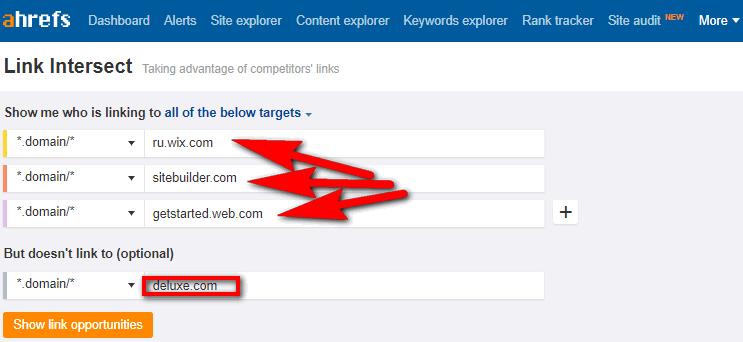
After clicking “show link opportunities,” you will get a list of links that haven’t linked to your website.
8. Watch over Competitor’s Links
No doubts that some of your competitors could get the top position in Google thanks to the links they obtained. And it is natural that you might want to get these links to outrank your competitors.
How to do this?
Set up the alerts using Ahrefs. Everything you need is a competitor’s domain name or a particular URL.
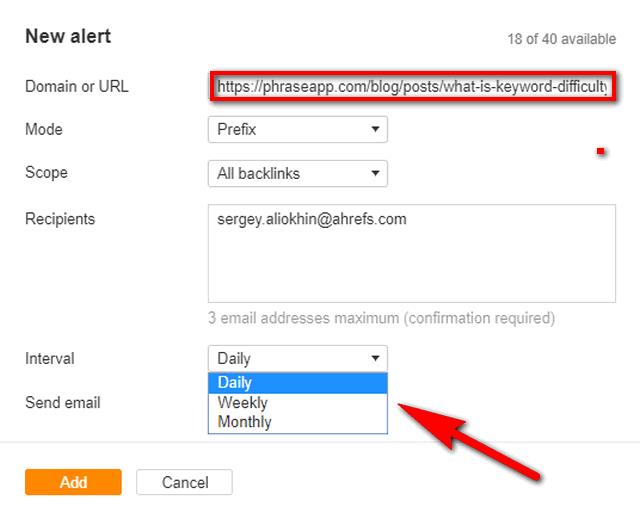
The alerts will give you an opportunity to get notifications about the links your competitor gains with a specific interval – daily, weekly, or monthly.
9. Get Links from Wikipedia
You can see that Wikipedia permits putting links over there. However, the main issue here is to preserve those links. How to convince Wikipedia that your link is worth living?
Make sure that your link leads to a high-quality related material. This information should provide pure value. Otherwise, your link will be removed.
10. Add Internal Links to the Best Content You Have
Did you know that adding internal links from the pages with high URL rating is an excellent way to boost your content?
To find pages with internal links, I recommend you to use Google Search Console. These pages will help you push target keywords up in Google top 10 search results.
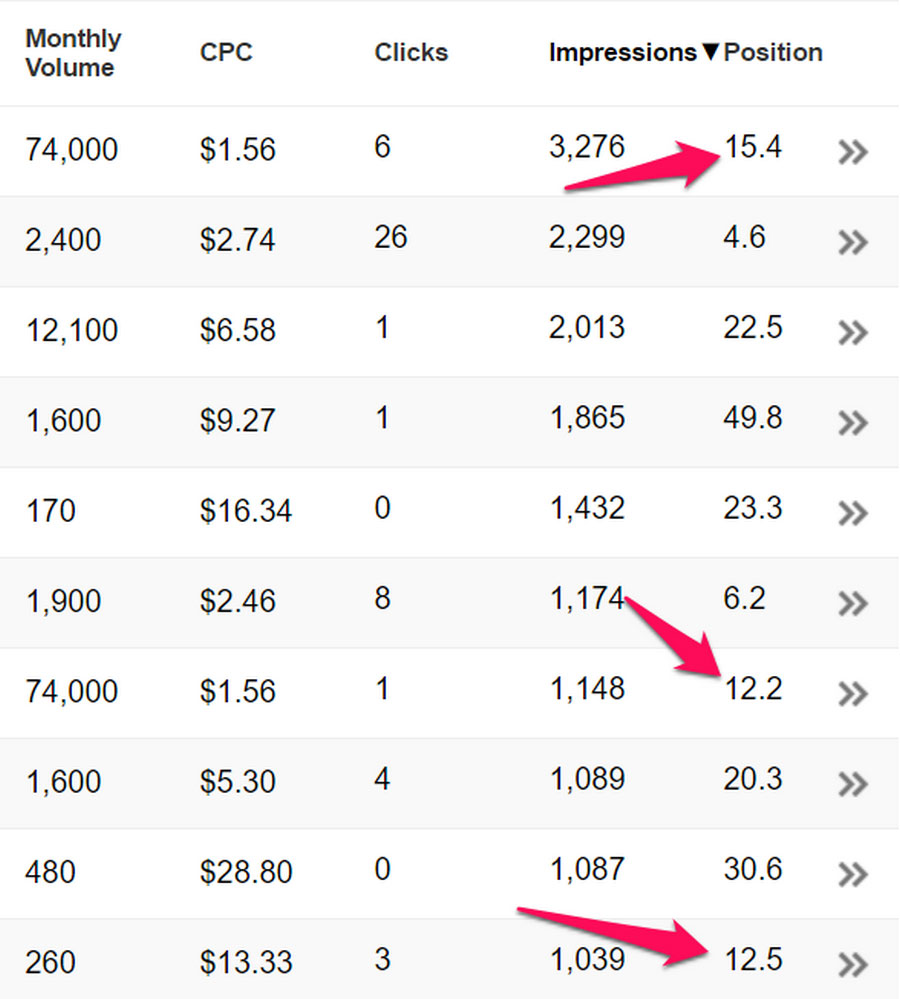
Choose keywords that have the highest number of impressions.
11. Do Content Repurposing
Let’s presume you published an impressive piece of content a couple of months ago. It could bring you a substantial amount of traffic, and you see that the topic seems to be in demand. You understand that you should give it another spin.
If you try to write a new post covering the same topic, it won’t bring you positive results. Nobody likes to read the old information. You can “transform” this content into video, infographics, or whatever you want instead. You know that the subject rocks, thus it will have a success being presented in a new format. This method is called “content repurposing.”
“Content syndication” works good as well. Let me give you a few resources where you could submit your brand new “old” content. Go to Medium, Social Media Today, LinkedIn, and many others.
12. Did You Find Your Brand Mention Without a Link? Turn It into Link
I am sure that you’ve seen lots of times that some resources mention your brand but don’t add a link back to your website within the content. It would be fair to ask “how to make these blog owners to add a link to your brand mention?”
Get in touch with a blog editor and ask to put a link. I know that it sounds easy to manage but don’t be super excited about this. Any blog editor can ask you something in return trying to build win-win relationships. Be ready for this type of business.
You can get your brand mentions with the help of alerts (I’ve already covered how to set them up above).
13.”Green Blogs” Could Be a Nice Place for Guest Posting as Well
When I want to publish my guest post, I am targeting those blogs that have robust metrics. The better metrics, the higher authority a website has.
Unfortunately, such influential blogs get tons of guest post requests daily. There is a game of chance if your pitch will be reviewed.
On the other hand, there are hundreds of thousands “green” blogs that have just stepped on the path of internet marketing. Yes, they don’t have impressive metrics, they can bring you zero traffic, but they will accept your guest pitch with pleasure.
Anyway, you should follow a couple of rules:
- Always offer high-quality content
- Target niche-related blogs
- Don’t overuse the exact match anchor text
- Add a naked URL to an author’s bio section
14. Analyze Competitor’s Most Shareable Content and Write Better One
The more shares a piece of content gets, the more traffic your website earns. What a simple formula, isn’t it?
If you have no clue what content could be shareable, check out what your competitors can tell you.
Go to Site Explorer tool from Ahrefs and skip to “Top content” report. “Total” metric will show you the list of topics that have the highest amount of social shares.
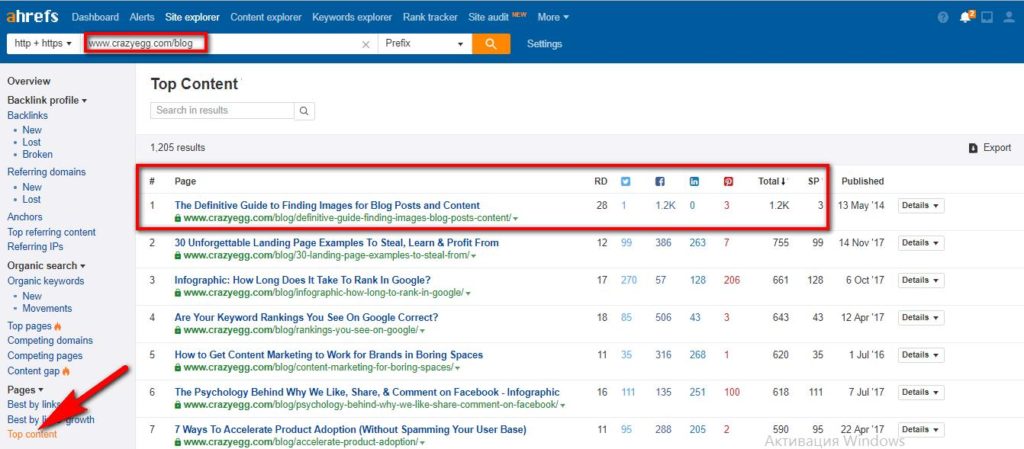
Now pick up the topics and write your material.
15. Copyright Rights Can Bring Traffic as Well
Abiding copyright rights is very important because of one reason – it helps you avoid penalties from Google. But what else could it bring you?
It can help you grow your traffic.
Here is how you can do this.
If you find some article that includes images, infographics, videos, or extracts from your content without any reference to the primary source, you can turn the tables. Ask a blog editor to add a link to your source or remove the material at all.
16. Competitor’s recurring backlinks
First thing first, recurring backlinks are the links that link to competitor’s pages manifoldly. You can use it to your benefit.
- Explore the opportunities you could gain from competitor’s recurring backlinks
- Discover promotional strategies your competitors use in practice
17. Anchor Text Links
Just for the record, using keywords in anchor text affects search rankings. It has been proven by the study across 16, 000 keywords.
However, only 2% of anchors had a partial match of 30%. It means that only 1 of 3 links can contain a target keyword.
Be careful with using anchors because Google Penguin watches over you!
18. Take Care of Your Backlink Profile – Clean It
Every rule has an exception. The same applies to link-building. There are cases when your competitors can use shady SEO tactics that have a negative impact on your backlink profile.
You should clean your backlink profile from spammy and suspicious links. Yes, it means that you will have to analyze each link manually. The most convenient way to do this is by exporting a CSV file of a backlink report.
When you find spammy links, you must contact webmasters and ask to remove the backlinks. But if it doesn’t help, I advise you to disavow suspicious links using Google’s disavow tool.
19. Steal Competitor’s Broken Links
No, I won’t give you any illegal techniques. It is a simple well-known practice among SEOs. You should search for competitor’s broken backlinks on a particular website and offer to replace them with your ones.
A “broken backlinks” report within Site Explorer tool will help you here.
This report gives you a list of broken backlinks that you can look through in order to replace them with your links.
Final Thoughts
Link-building is a sophisticated strategy. It includes lots of different aspects that will help you earn more links.
This guide familiarises you with 19 actionable strategies that will bring good results. Apply these techniques in your marketing campaigns and reap the benefits.
Did you find this article useful? Please share it through your social media accounts and don’t forget to leave your comments.







